The church of
St. Agatha
‘s Abbey is located a few metres away from the Cathedral.
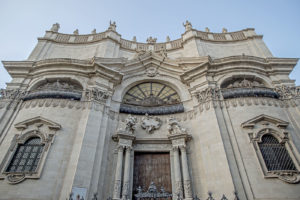 The abbey was rebuilt in 1735 following the catastrophic earthquake of 1693, under the supervision of architect
Giovanni Battista Vaccarini
The abbey was rebuilt in 1735 following the catastrophic earthquake of 1693, under the supervision of architect
Giovanni Battista Vaccarini
.
Recently returned from Rome, he was inspired by models from Roman Baroque.
Located in the street that runs alongside the cathedral of St. Agatha, the building can be seen from Piazza Duomo in a scenic game of perspective through the cathedral’s garden.
The façade rests on a large
lava stone
base and has giant order limestone
pilasters
with a palm-shaped capital and an alternating pattern of convex-concave-convex surfaces. The convex parts have openings surmounted by
tympanums
with relief decorations depicting the breasts of the Virgin Martyr.
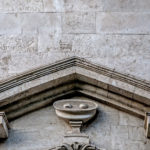
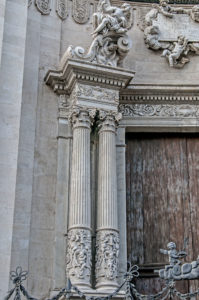
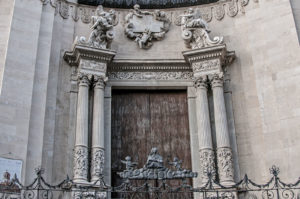
In the concave part, on the other hand, there is the entrance portal, framed between two groups of marble
coupled columns
arranged on a pedestal.
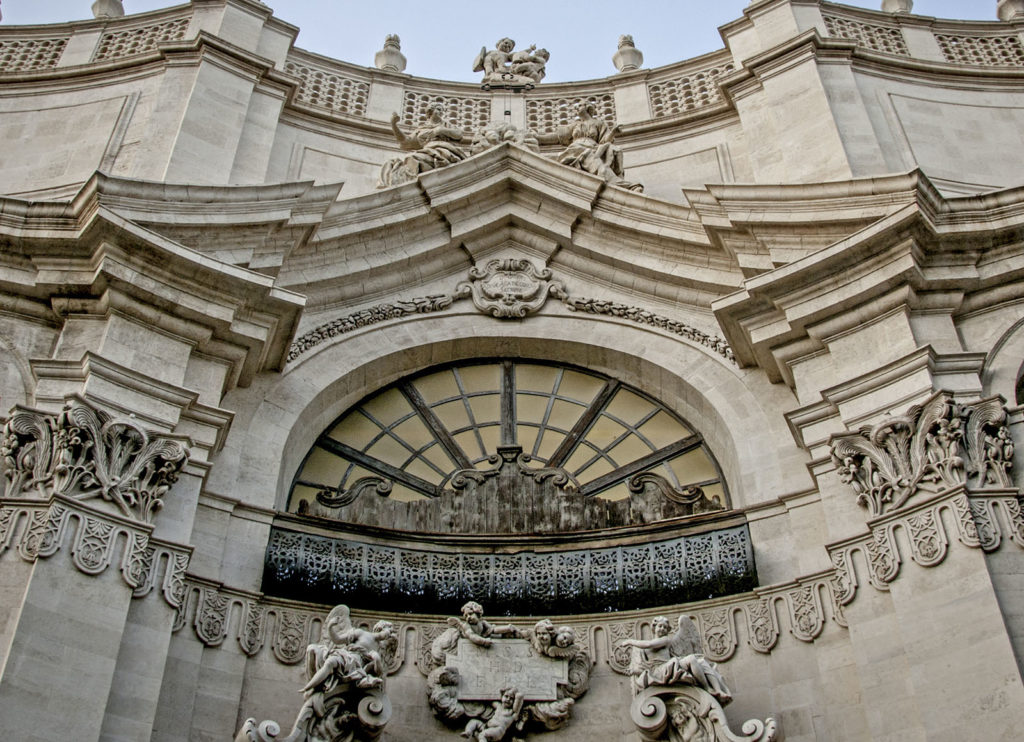 An elegant
pediment
An elegant
pediment
completes the entire composition.
The curved
trabeation
above the openings on the first level creates a play of light and shadow that projects over the characteristic Louvre windows, which rest on a stone arabesque decoration.
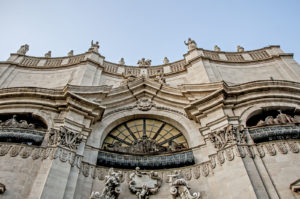
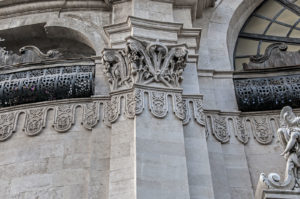
Sinuous and protruding at the end, and made of perforated metal, the Louvre windows allowed the nuns to take part in processions without being seen, thanks to two specially designed compartments. The second level, on the other hand, is three times concave and ends with a continuous balustrade in perforated stone with interlaced links.